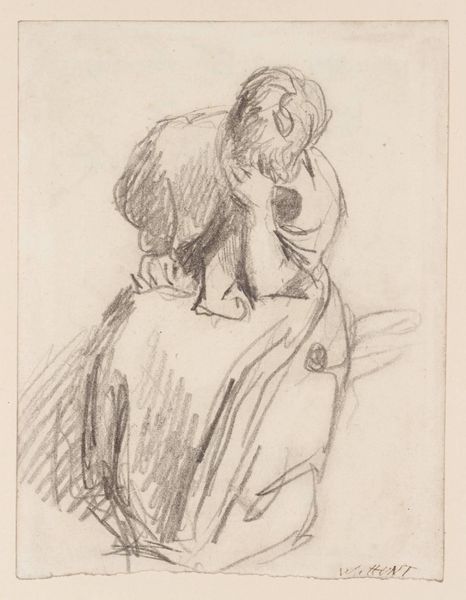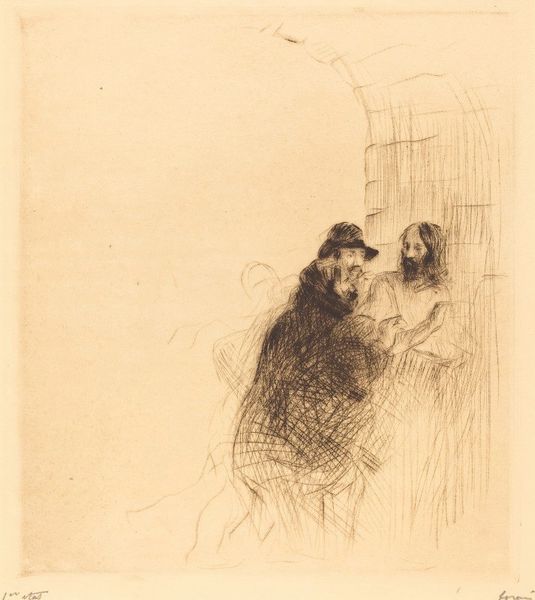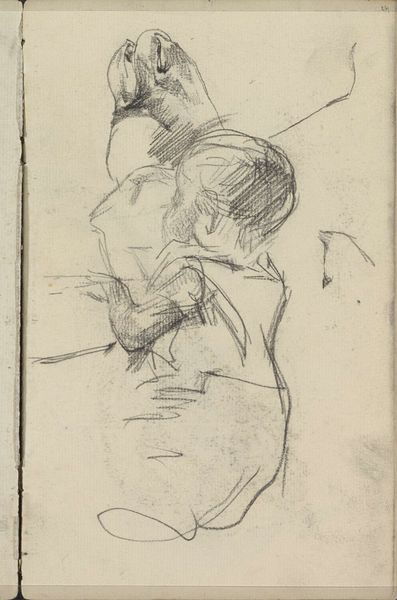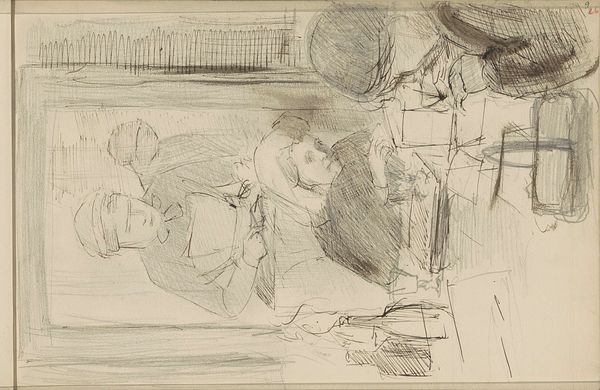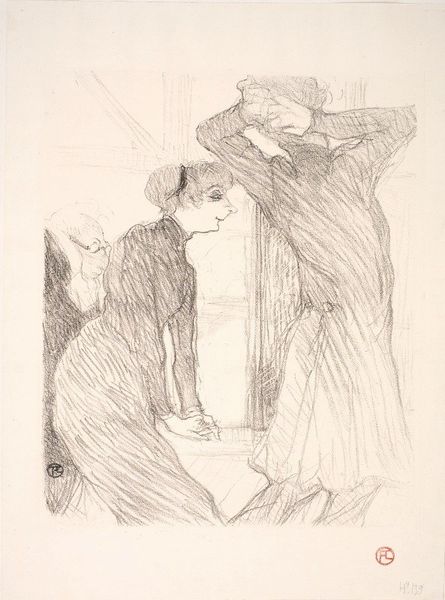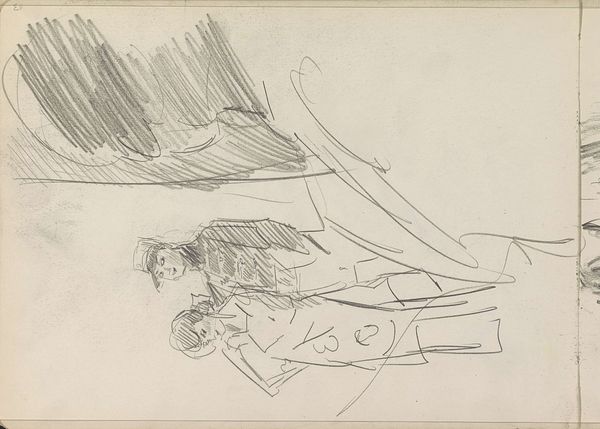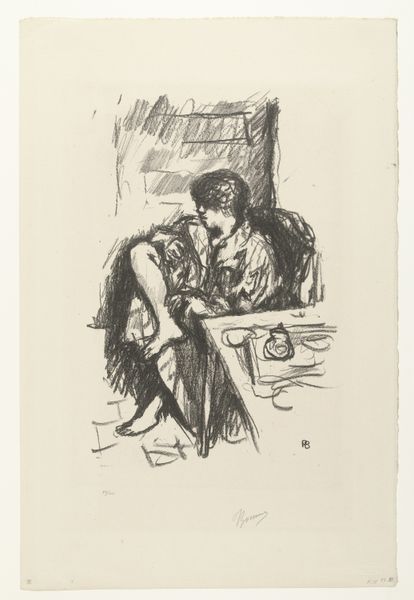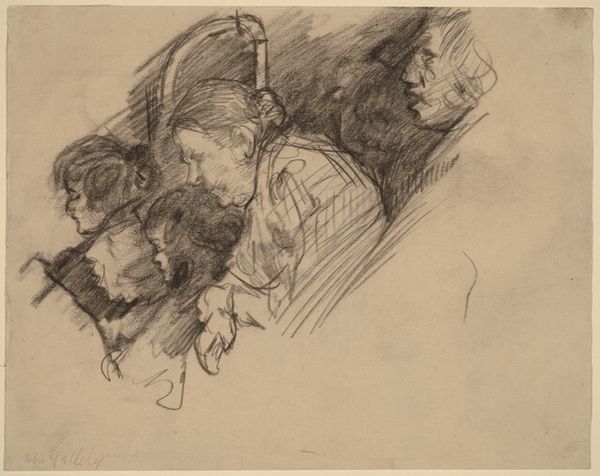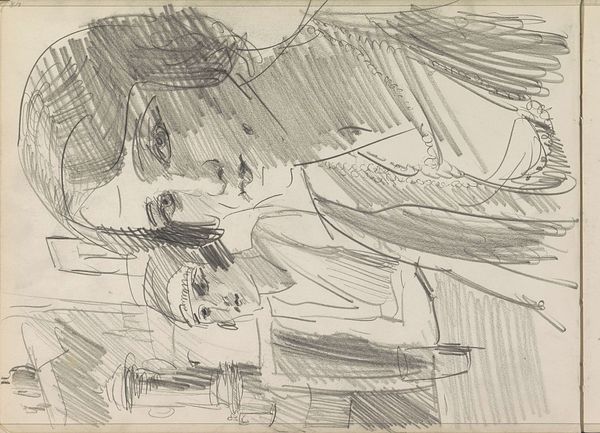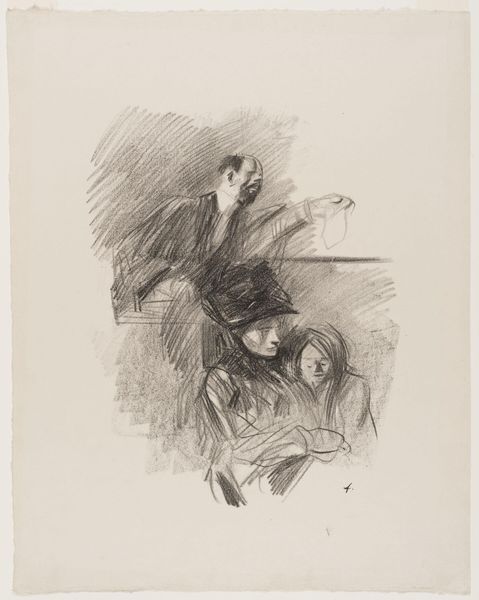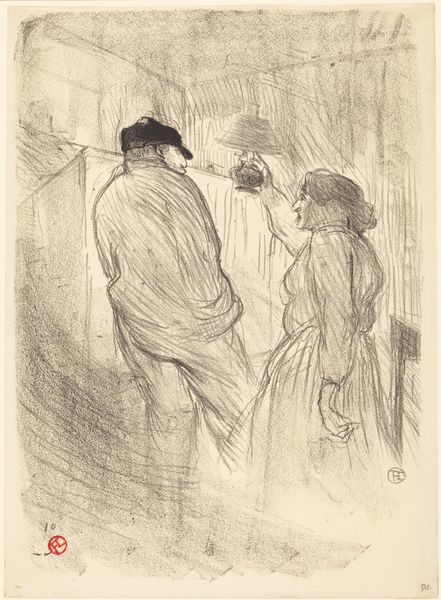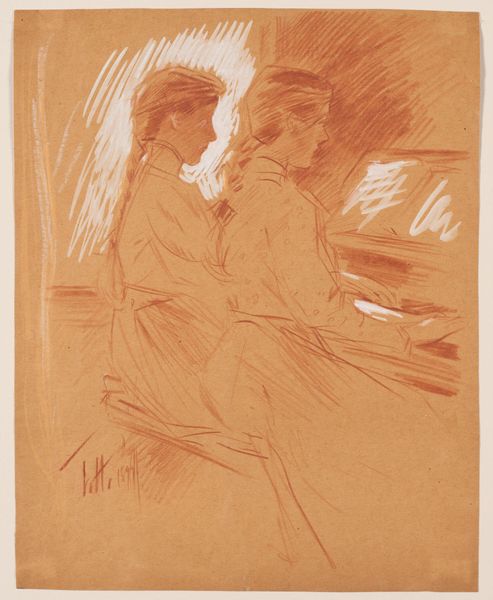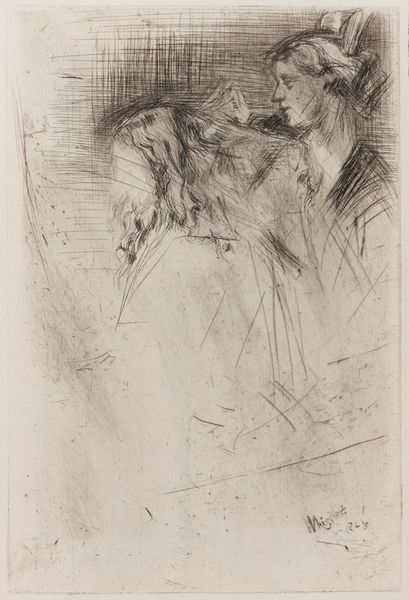
drawing, print, pencil
#
portrait
#
drawing
# print
#
impressionism
#
pencil sketch
#
figuration
#
pencil
#
portrait drawing
Copyright: National Gallery of Art: CC0 1.0
Editor: So, this is Jean-Louis Forain’s "A Painting of Daddy's! (second plate)," likely a pencil drawing or print. The fleeting sketch-like quality feels so intimate, like a glimpse into a private moment. What's your take on this piece? Curator: I see a fascinating commentary on the production and consumption of art. The visible pencil strokes are not just about creating an image. They're revealing the labor involved, the artistic process itself laid bare. Consider also the "print" aspect. How does reproduction change the perceived value and accessibility of the artwork? Who gets to own or view it? Editor: That's a different way to look at it. I was focusing more on the emotional connection between the figures. The sketchiness made it seem so personal. Curator: Exactly! And that perceived intimacy plays right into the art market. It creates a sense of authenticity, a story that can be bought and sold. This wasn't just a standalone piece, but most likely part of a series, intended for circulation and consumption. What does that say about Forain’s intentions and audience? Was he critiquing the very system he participated in? Editor: Hmm, it sounds like you are less interested in the family connection than the pencil that created the artwork? Curator: Not necessarily, but who has time to portray leisure if your very survival depends on artistic skill? Do you see the tension between domestic scene and a business deal that could affect the price of food? Editor: I didn’t think about how prints could be both accessible art and still be sold in a marketplace like any commodity. That tension makes the piece much more interesting to me now. Curator: Absolutely. The tension between the private moment and its commodification speaks volumes about the social conditions of artmaking and its reception. It shows how artistic intention is never fully divorced from material reality.
Comments
No comments
Be the first to comment and join the conversation on the ultimate creative platform.
